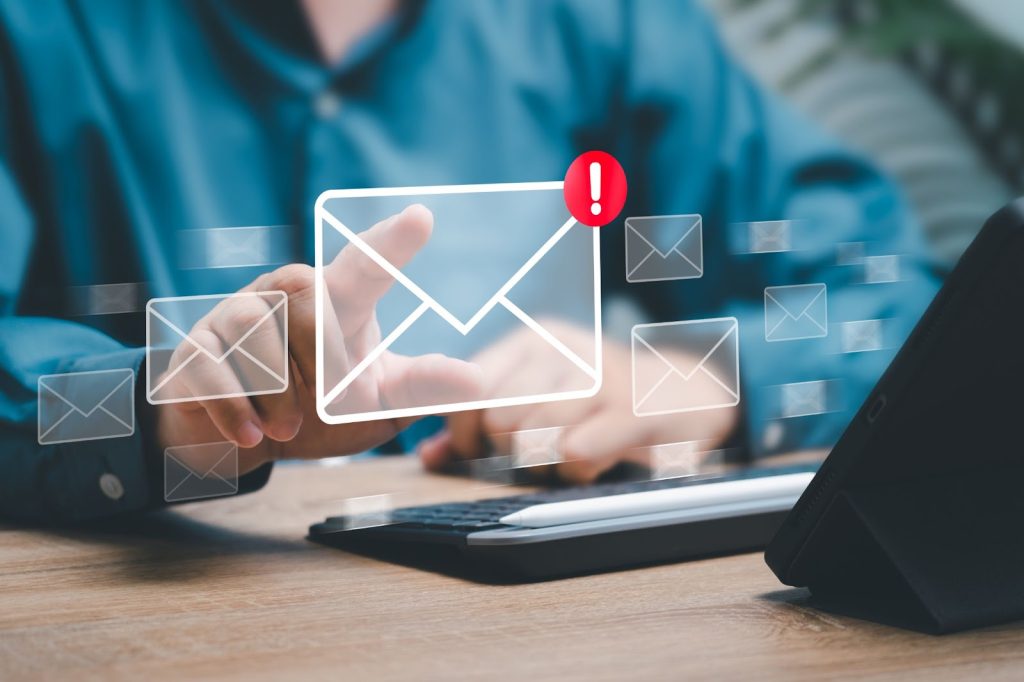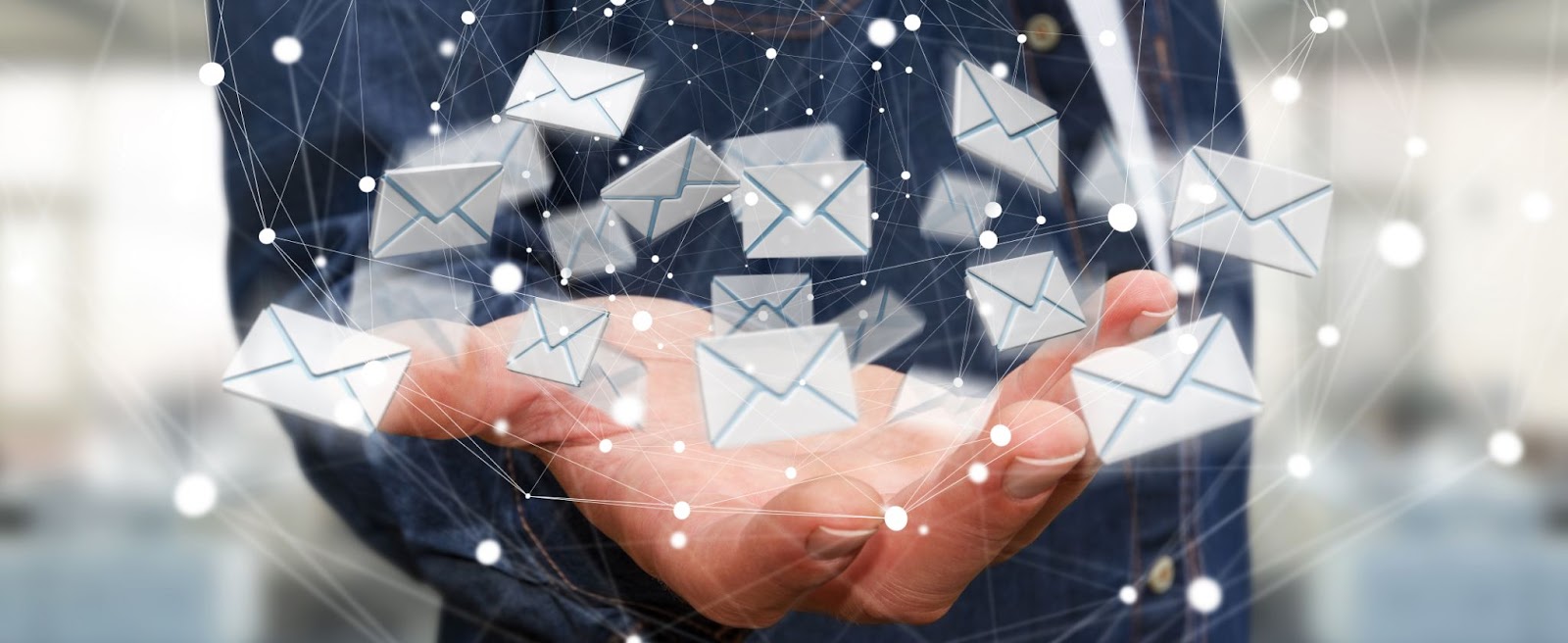Revity to the rescue as your one-stop shop for email marketing agency services and everything you need to know about the importance of email list cleaning!
Your email marketing list is one of your most powerful resources as a company and community leader. If you don’t already know, more than 90 percent of businesses say email marketing is important to their company’s success — 41 percent of those companies say it’s vital. Going further into its role in your marketing strategy, 79 percent of marketers consider it one of their top 3 most effective channels!
With that in mind, cleaning up your email lists brings many benefits to your marketing strategy and your business. You want to protect your email marketing list and make email list cleaning a priority.
If you’re new to the world of using emails for marketing, we will cover what email list cleaning is and why it’s important. We will also cover when you need to clean your list, misconceptions about email list cleaning, the risks of poor email marketing list hygiene, and how to do it right.
That’s a lot — so let’s get started!
What is email list cleaning?
Email list cleaning, also known as email scrubbing, is a process of various tasks, from removing, adding, and re-engaging your email marketing list. As a business, you have many motivations to exercise your work with limited expenses and be as beneficial to your customers while being profitable for yourself and your employees.
When should you conduct email list hygiene?
Businesses should frequently review their email marketing list. The following list breaks down specific signs that indicate it’s time to clean. However, a good rule of thumb is at least once every three months. Regular maintenance helps your company stay on top of any issues and ensures your list remains effective.
You’re switching ESPs, CRMs, or CDPs
When you upgrade or change Email Service Providers (ESP), Customer Relationship Management Systems (CRM), or Customer Data Platforms (CDP), you will want to review your email lists. A dirty email list can cause issues when migrating to the new system, and you will have to have a fresh, smooth start.
You get an influx of new contacts
Whether through an email marketing campaign, a trade show, or other circumstance that causes a rush of new contacts, this is another good reason to review and clean your email marketing list. Without proper hygiene, a list with a recent influx of contacts, you can unexpectedly introduce invalid or low-quality contacts.
You have a high email bounce rate
A high email bounce rate is the percentage of email addresses you could successfully deliver to. Email service provider Campaign Monitor stated that best practice guidelines for “a well-maintained, permission-based list should typically see bounce rates of 2% or less for each email campaign sent.”
You’re getting spam complaints
High bounce rates can lead to spam-flagged emails, reducing deliverability. Called spam complaints, these unwanted email reports can harm your sender reputation. A spam complaint is especially common when the email receiver clicks the spam button in their email. When this happens, you will see it in your email report, and the percentage will be compared to the total number of emails sent.
Avoid spam traps
According to Litmus, “Spam traps are commonly used by inbox providers and blocklist providers to catch malicious senders, but quite often, legitimate senders with poor data hygiene or acquisition practices end up on the radar as well.” Even if your company does not intentionally participate in spam practices, if your email list is too extensive, you can end up with an email address only used to identify your company.
Email providers can block you from ending up in their users’ inboxes, which will dramatically lower your deliverability rate. Doing everything you can to avoid spam traps can ensure higher deliverability, leading to higher open and click-through rates.
Waning email engagement
Unengaged subscribers can result in lower open and click rates. The decline of these metrics could be because your emails aren’t targeting the right people or the email receiver isn’t interested or active. Review your email marketing strategy, work on a re-engagement campaign, and clean your email list.

The list contains purchased contacts
As a company specializing in email marketing agency services, you should be wary of purchased lists. Maybe you bought it for a purpose, but this can turn into a long-term usage of outdated or irrelevant contacts, increasing the risk of spam complaints and bounces. Purchased lists often don’t have emails relevant to your brand and are likely not qualified leads that will positively impact your bottom line.
Misconceptions about list cleaning
Misconceptions about email list cleaning that it’s something we need to cover. Your email marketing list is most likely something you’ve worked hard for years to build and nurture.
You don’t have to hire a list cleaning service when you perform list hygiene. These services are unreliable and are not customized or helpful. You want to manually look at the data and metrics of your emails and take certain steps (listed below) to ensure your list will continue to be dependable and successful for your business moving forward.
Another misconception about email list cleaning is the need to suppress unsubscribes, spam complaints, and bounced addresses. The goal is to engage with email subscribers and be their guide to making a purchase, but suppressing users from emails does not accomplish that goal. Even if you are uncertain they will re-engage, you will be better to clean your list accurately and thoroughly in the long run.
Why it is important to clean your email lists
Don’t you want to see your email list (and profitability goals for the company) have success?
According to Email Service Provider Hubspot, email lists go through natural degradation and can degrade up to 22.5% annually. If that’s not reason enough to clean your email marketing list, I don’t know what is!
In order to see the ultimate success, a clean email list is vital. Even if your email marketing list rates don’t improve dramatically, long-term success is within reach. Here are a few important reasons why having a clean email list is important.
Improve your deliverability
Maintaining a clean email marketing list ensures that your message reaches the inboxes of your intended recipients, increasing the chances of readers opening and reading them.
Improve your email metrics
Your email marketing list needs to aim for your target audience. Ensure each contact on your email list wants to receive the company’s new information. If the people on your email list are interested in your product or service, you’ll end up with better results and better data, even if it means the list has to go through some shrinking.
Think about it this way: if 100 people are on your email list and only 50 are interested in your business, then only 50 will open your emails and click through them. You’re wasting time and resources on people that do not deliver results. Trim off the fat from your email list and pour that extra time and resources into recruiting new members who are more likely to open and click through your emails.
Protect your data
Email list cleaning protects your data. It’s as simple as that. It maintains the integrity of your data. In all marketing practices, data is what drives better decision-making. If you cut down your email marketing list to your interested subscribers, you can better understand what strategies are working and not working.
Nicole Martin said, “The best part of having data is knowing exactly who you are talking to and who you should be targeting in your marketing campaigns.” If you want the best results for your business, you have to create an avenue to get the best data to make the best decisions.
Improve your partnership with your email service provider
When you better organize and clean your email marketing lists, you have the opportunity to reduce your ESP costs. You shouldn’t have to keep and pay for subscribers who aren’t finding your content useful.
Protect your reputation
The previously mentioned signs of email hygiene, left unattended to, can cause damage to your company’s email sender reputation. Keep a good sender reputation to ensure your emails aren’t flagged as spam. Doing that will maintain high credibility not only for your company but also for your ESP.
ESPs determine a sender reputation score for each account that uses their software. This influences whether or not to send your email to the recipients you’re trying to reach. A low reputation means your email is less likely to be delivered or could end up in the recipient’s spam folder. ESP’s measurement of reputation can vary, but it’s important to acknowledge this as an important reason to follow email marketing best practices.

How to clean your email marketing list
After learning what email list cleaning is, the signs that it’s time to clean your email marketing list, and why email list cleaning is important, here are a few things you can do today to get started.
- Eliminate duplicate entries
The first and easiest thing you can do to clean your email marketing list is to use tools to identify and remove duplicate email addresses.
Duplicate email addresses in your list can distort your analytics and lead to wasted resources. When the same email address appears multiple times in your list, it can result in the recipient receiving multiple copies of the same email, leading to frustration and potential unsubscribes.
Eliminating duplicate entries provides a better user experience and more accurate campaign data.
- Remove hard bounces and invalid email addresses
When you notice high bounce rates or multiple invalid email addresses, you know it’s time to clean. There are two types of bounce rates: hard and soft. A hard bounce means there’s a reason why it can’t be delivered. It might not be deliverable because the email doesn’t exist, it is a fake email address, the recipient email server has permanently blocked your emails, or there are typos or mistakes in the address.
These are email addresses you can easily clean out to improve your delivery rate.
- Monitor and clean up soft bounces
Soft bounce rates are a temporary reason why you cannot send emails to a user. Maybe you cannot send an email because the mailbox is full, the message is too large, or the server timed out. It could also mean the domain doesn’t exist or the mailbox isn’t configured correctly. There are many reasons for a soft bounce.
While these bounces may seem less critical than hard bounces, they still impact your email deliverability and overall campaign performance. Track soft bounces and determine if they are temporary issues. If so, you will need to remove the address. Doing this will improve your engagement rates.
- Identify inactive subscribers through email segmentation
After eliminating duplicates and bounced emails, you want to weed out inactive subscribers. Inactive subscribers are those who haven’t opened or clicked on your emails for an extended period. Do this through a re-engagement campaign to segment your list.
By targeting these inactive contacts with re-engagement campaigns, you can attempt to rekindle their interest and engagement in your content. If these efforts fail, remove them from your email marketing list to focus on those genuinely interested in your emails.
Revity to the rescue for email list cleaning
At Revity, we’re dedicated to seeing your marketing efforts succeed. We have teams in email marketing, social media marketing, search engine optimization, and more! If you’re looking for a team that caters to your company’s specific needs, Revity is your full-service marketing agency.
Whether you’re a local company, across the country or the globe, we’ll help you create and implement email marketing agency services that will provide your business with the best results. We’ll weed out your invalid email addresses and disengaged subscribers to make sure your email marketing list is squeaky clean and ready to score deliverability points. Contact us today for a free estimate.







